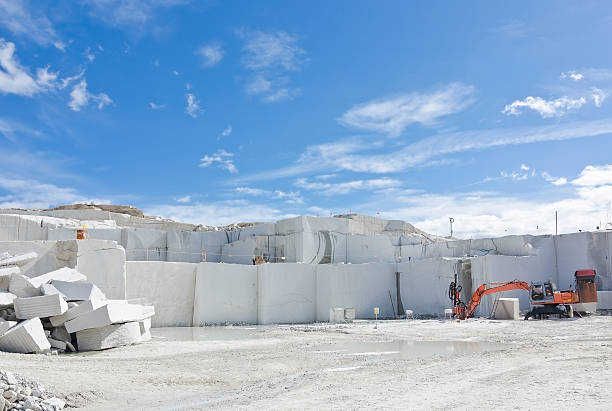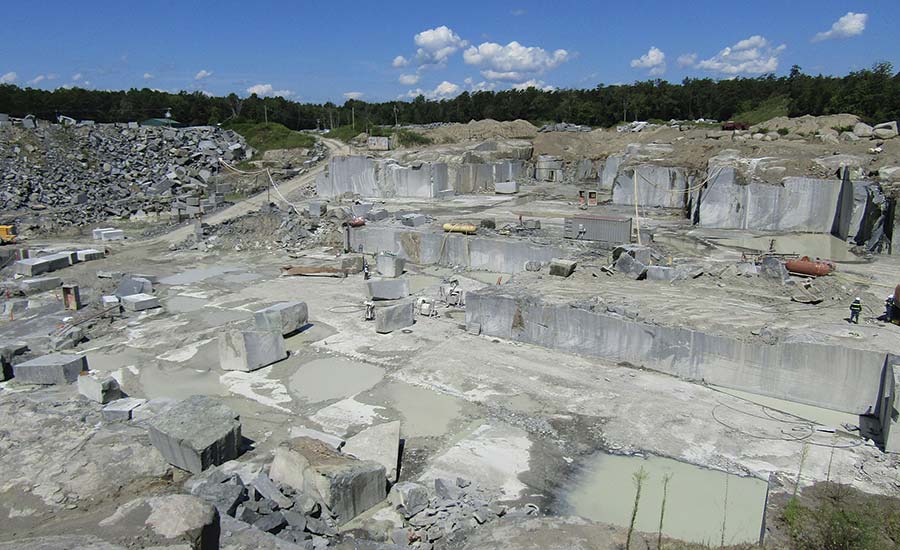Discovering the Beauty of Granite Quarry in South Africa Wonders
Discovering the Beauty of Granite Quarry in South Africa Wonders
Blog Article
Introducing the Mysteries of Granite Quarrying: Where Strength and Beauty Meet
The globe of granite quarrying is a world where the raw toughness of nature converges with human virtuosity to create frameworks that stand the test of time with an air of sophistication. From the midsts of quarries to the meticulous polishing in workshops, the process of transforming granite into building wonders is an intricate dance of tradition and development. As we peer into the depths of this old craft, we start to reveal the surprise intricacies that shape the really essence of our developed setting.
The Origins of Granite Quarrying
In the annals of building background, the origins of granite quarrying are shrouded in a tapestry of old workmanship and geological marvels. Dating back to ancient Egypt and Mesopotamia, the removal of granite from quarries noted the beginning of a journey that would ultimately bring about the production of several of the globe's most famous structures.
Granite quarrying's origins can be mapped to the knowledgeable artisans who acknowledged the stone's resilience and aesthetic charm. With a combination of primitive devices and large decision, these early quarry workers discovered granite blocks that would end up being the foundation of worlds.
As people advanced, so did the strategies of quarrying granite. The Romans, renowned for their design prowess, developed innovative approaches for drawing out granite to construct monuments, holy places, and roads that stood the test of time.
The heritage of these old quarrying methods continues to form contemporary architecture, with granite continuing to be an icon of stamina and elegance in construction tasks around the globe. (granite quarries in south africa)
Tools of the Quarrying Profession
The development of granite quarrying techniques from old people to modern times highlights the critical duty played by the tools of the quarrying profession in shaping the sector's methods. In old times, quarrying devices were basic, often including chisels, hammers, and wedges made from products like bronze or iron. These tools called for significant workforce and time to extract granite obstructs from quarries.

Furthermore, the introduction of pneumatic tools and high-powered machinery has substantially lowered the physical labor required in quarrying operations, boosting employee safety and efficiency. As the quarrying sector remains to introduce, the devices of the trade stay at the forefront of driving progress and forming the future of granite extraction.
Extracting Blocks of Granite
Using precision equipment and progressed strategies, the removal of granite blocks from quarries has actually come to be an innovative process in the modern quarrying sector. The initial step includes determining the place and dimension of the granite down payment to identify the most reliable removal technique. When a suitable site is picked, the extraction process begins with the exploration of openings for the positioning of dynamites. Regulated blowing up techniques are after that utilized to disintegrate the granite right into workable sections.

Sprucing Up and Completing Strategies
To accomplish a flawless surface area on granite blocks, proficient artisans use a series of meticulous sprucing up and finishing strategies. After the preliminary removal and shaping procedures, the granite blocks undergo a detailed polishing stage to improve their all-natural charm and resilience. One usual method used in brightening granite is ruby abrasion, where commercial diamonds are utilized to grind and polish the stone to a smooth coating. This procedure not only develops a shiny surface area but likewise ensures uniformity in shade and texture throughout the granite block.
In enhancement to polishing, completing strategies are used to further fine-tune the granite's look. These strategies might include flaming, developing, or brushing, each offering distinct structures and surfaces to match various visual preferences. Flaming, for instance, includes subjecting the granite surface area to heats to develop a harsh, distinctive finish, ideal for outdoor applications where slip-resistance is essential. our website Refining, on the other hand, supplies a matte surface that is smooth to the touch, best for interior kitchen counters and floor covering. By meticulously choosing and using these polishing and ending up techniques, craftsmens can change raw granite blocks right into exquisite pieces that display both stamina and sophistication.

Environmental Effect and Sustainability
With the growing emphasis on environmental awareness in the sector, granite quarrying techniques are significantly inspected for their influence on natural sources and this link lasting sustainability. Quarrying for granite can have significant ecological effects. The extraction procedure usually entails using heavy machinery, nitroglycerins, and huge amounts of water, resulting in habitat devastation, dirt disintegration, and water pollution. In addition, the transportation of granite from quarries to refining centers generates carbon exhausts, further adding to ecological deterioration. granite quarries in south africa.
To mitigate these effects and ensure sustainability in granite quarrying, market stakeholders are adopting different measures. Implementing sophisticated technologies to decrease energy usage and water use, redeeming quarried land for ecological restoration, and promoting accountable sourcing methods are some strategies being employed. Furthermore, qualifications such as the Woodland Stewardship Council (FSC) and the Management in Power and Environmental Design (LEED) help customers determine eco pleasant granite products.
Final Thought
To conclude, granite quarrying is a process that calls for specialized tools and strategies to essence blocks of granite and polish them to a high level of surface. While the ecological impact see this page of quarrying can be considerable, efforts are being made to enhance sustainability techniques in the industry. In general, granite quarrying is a fragile balance between using the strength and sophistication of this natural stone while minimizing its influence on the atmosphere.
Report this page